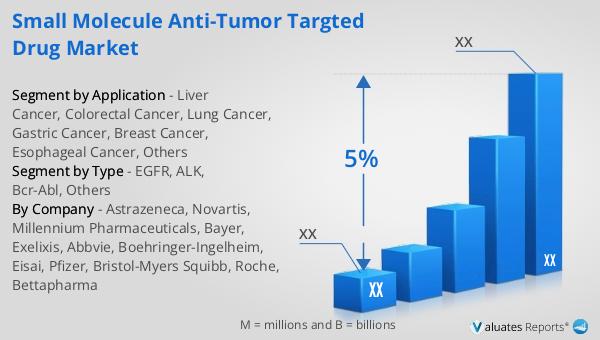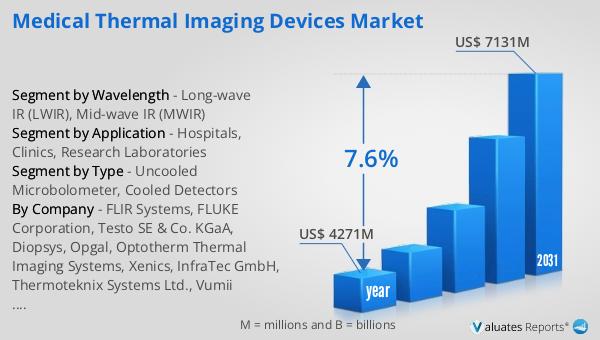What is Global Small Molecule Anti-tumor Targted Drug Market?
The Global Small Molecule Anti-tumor Targeted Drug Market is a specialized segment within the broader pharmaceutical industry, focusing on the development and commercialization of small molecule drugs designed to target specific proteins or pathways involved in cancer growth and progression. These drugs are engineered to interfere with the molecular mechanisms that drive tumor development, offering a more precise approach to cancer treatment compared to traditional chemotherapy. The market is driven by the increasing prevalence of cancer worldwide, advancements in molecular biology, and the growing demand for personalized medicine. Small molecule targeted therapies are particularly appealing because they can be administered orally, have a relatively low molecular weight, and can penetrate cell membranes to reach intracellular targets. This market is characterized by intense research and development activities, with numerous pharmaceutical companies investing heavily in the discovery of novel targets and the development of new drugs. The regulatory landscape is also evolving, with agencies like the FDA and EMA providing expedited pathways for the approval of breakthrough therapies. Overall, the Global Small Molecule Anti-tumor Targeted Drug Market represents a dynamic and rapidly growing field, offering significant potential for improving cancer treatment outcomes and patient quality of life.

EGFR, ALK, Bcr-Abl, Others in the Global Small Molecule Anti-tumor Targted Drug Market:
EGFR, ALK, Bcr-Abl, and other targets play a crucial role in the Global Small Molecule Anti-tumor Targeted Drug Market, each representing a unique pathway or protein involved in cancer development. EGFR, or Epidermal Growth Factor Receptor, is a protein that, when mutated or overexpressed, can lead to uncontrolled cell division and tumor growth. Small molecule inhibitors targeting EGFR, such as gefitinib and erlotinib, have been developed to block this receptor's activity, particularly in non-small cell lung cancer (NSCLC) patients with specific mutations. These drugs have shown significant efficacy in shrinking tumors and improving survival rates, although resistance often develops over time, necessitating the development of next-generation inhibitors. ALK, or Anaplastic Lymphoma Kinase, is another target that has gained attention, especially in NSCLC. ALK rearrangements or mutations can drive cancer progression, and small molecule inhibitors like crizotinib and alectinib have been designed to specifically target these alterations. These drugs have transformed the treatment landscape for ALK-positive lung cancer, offering patients a more effective and less toxic alternative to chemotherapy. Bcr-Abl is a fusion protein resulting from a chromosomal translocation, most commonly associated with chronic myeloid leukemia (CML). The development of imatinib, a small molecule inhibitor targeting Bcr-Abl, revolutionized CML treatment, turning what was once a fatal disease into a manageable chronic condition. Imatinib's success paved the way for the development of other Bcr-Abl inhibitors, such as dasatinib and nilotinib, which are used to overcome resistance and improve patient outcomes. Beyond these well-known targets, the market is also exploring other proteins and pathways involved in cancer, such as HER2, VEGFR, and MEK. HER2-targeted therapies, like lapatinib, are used in breast cancer patients with HER2 overexpression, while VEGFR inhibitors, such as sunitinib, are employed in renal cell carcinoma and gastrointestinal stromal tumors. MEK inhibitors, like trametinib, target the MAPK/ERK pathway, which is often dysregulated in melanoma and other cancers. The diversity of targets within the Global Small Molecule Anti-tumor Targeted Drug Market underscores the complexity of cancer as a disease and the need for a multifaceted approach to treatment. Each target represents a potential avenue for intervention, and ongoing research is crucial to identify new targets and develop more effective therapies. The market is characterized by a high level of innovation, with pharmaceutical companies continually seeking to improve existing drugs and discover novel compounds that can overcome resistance and provide better outcomes for patients. As our understanding of cancer biology continues to evolve, the Global Small Molecule Anti-tumor Targeted Drug Market is poised to play a pivotal role in the future of oncology, offering hope to millions of patients worldwide.
Liver Cancer, Colorectal Cancer, Lung Cancer, Gastric Cancer, Breast Cancer, Esophageal Cancer, Others in the Global Small Molecule Anti-tumor Targted Drug Market:
The Global Small Molecule Anti-tumor Targeted Drug Market has significant applications across various types of cancer, including liver, colorectal, lung, gastric, breast, esophageal, and others. In liver cancer, small molecule inhibitors like sorafenib have been used to target the RAF/MEK/ERK pathway, which is often activated in hepatocellular carcinoma. Sorafenib has been shown to improve survival in patients with advanced liver cancer, although its efficacy is limited, and resistance can develop. Research is ongoing to identify new targets and develop more effective therapies for liver cancer patients. In colorectal cancer, small molecule inhibitors targeting the EGFR pathway, such as cetuximab and panitumumab, have been used in combination with chemotherapy to improve outcomes in patients with metastatic disease. These drugs are particularly effective in patients with wild-type KRAS tumors, highlighting the importance of molecular profiling in guiding treatment decisions. Lung cancer, particularly non-small cell lung cancer (NSCLC), has been a major focus of the Global Small Molecule Anti-tumor Targeted Drug Market. EGFR and ALK inhibitors have transformed the treatment landscape for patients with specific genetic alterations, offering a more personalized approach to therapy. Drugs like osimertinib and lorlatinib have been developed to overcome resistance to earlier-generation inhibitors, providing new options for patients with advanced disease. In gastric cancer, small molecule inhibitors targeting HER2, such as lapatinib, have been used in combination with chemotherapy for patients with HER2-positive tumors. While these therapies have shown promise, gastric cancer remains a challenging disease to treat, and ongoing research is needed to identify new targets and improve outcomes. Breast cancer is another area where small molecule targeted therapies have made a significant impact. HER2-targeted drugs, like lapatinib, have been used in patients with HER2-positive breast cancer, often in combination with other therapies to enhance efficacy. Additionally, CDK4/6 inhibitors, such as palbociclib, have been developed to target the cell cycle in hormone receptor-positive breast cancer, offering a new approach to treatment. Esophageal cancer, while less common, has also seen the development of targeted therapies, particularly for patients with HER2 overexpression. Trastuzumab, a monoclonal antibody, has been used in combination with chemotherapy for these patients, although small molecule inhibitors are also being explored as potential treatment options. Beyond these specific cancers, the Global Small Molecule Anti-tumor Targeted Drug Market is continually expanding to address other malignancies, such as melanoma, renal cell carcinoma, and pancreatic cancer. Each type of cancer presents unique challenges and opportunities for targeted therapy, and ongoing research is essential to identify new targets and develop more effective treatments. The market's focus on personalized medicine and molecular profiling is driving innovation and improving outcomes for patients across a wide range of cancers.
Global Small Molecule Anti-tumor Targted Drug Market Outlook:
In 2022, the global pharmaceutical market reached a valuation of approximately 1,475 billion USD, demonstrating a steady growth trajectory with a compound annual growth rate (CAGR) of 5% projected over the next six years. This growth reflects the increasing demand for innovative therapies and the expansion of healthcare access worldwide. In comparison, the chemical drug market, a significant subset of the pharmaceutical industry, has also shown notable growth. From 2018 to 2022, the chemical drug market expanded from 1,005 billion USD to 1,094 billion USD. This increase underscores the ongoing importance of chemical drugs in the treatment landscape, despite the rise of biologics and other advanced therapies. The chemical drug market's growth is driven by factors such as the development of new formulations, the introduction of generic drugs, and the expansion of therapeutic indications for existing medications. As the pharmaceutical industry continues to evolve, both the broader market and the chemical drug segment are expected to play crucial roles in addressing global healthcare challenges and meeting the needs of diverse patient populations. The interplay between innovative drug development and the availability of cost-effective generics will be key to sustaining growth and ensuring access to essential medicines worldwide.
| Report Metric | Details |
| Report Name | Small Molecule Anti-tumor Targted Drug Market |
| CAGR | 5% |
| Segment by Type |
|
| Segment by Application |
|
| By Region |
|
| By Company | Astrazeneca, Novartis, Millennium Pharmaceuticals, Bayer, Exelixis, Abbvie, Boehringer-Ingelheim, Eisai, Pfizer, Bristol-Myers Squibb, Roche, Bettapharma |
| Forecast units | USD million in value |
| Report coverage | Revenue and volume forecast, company share, competitive landscape, growth factors and trends |
